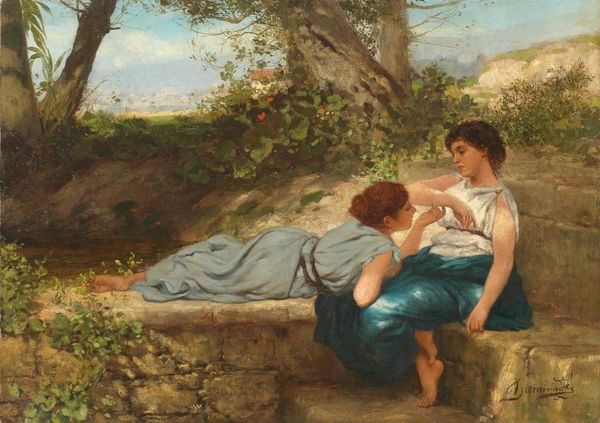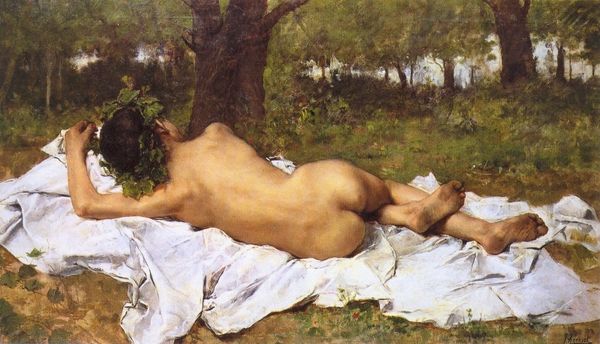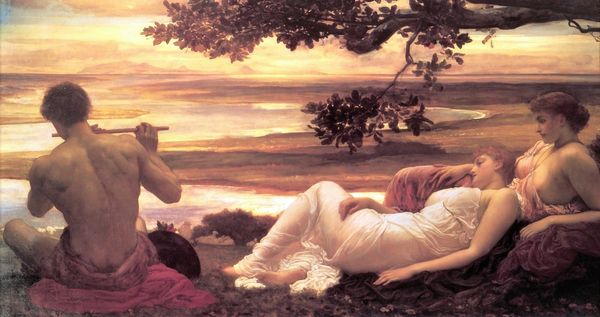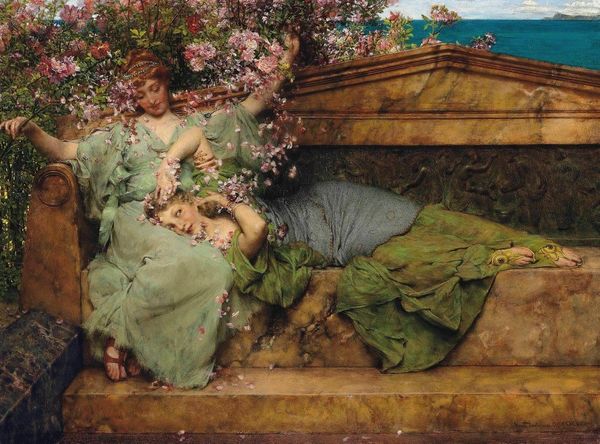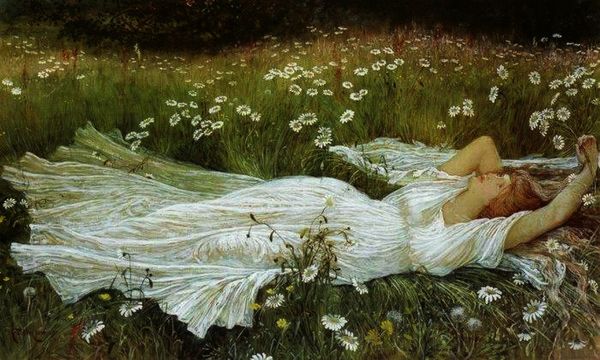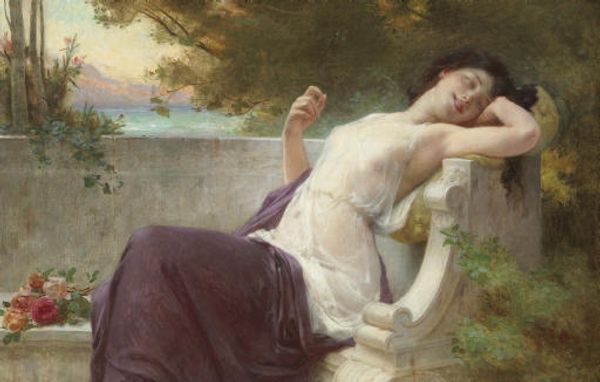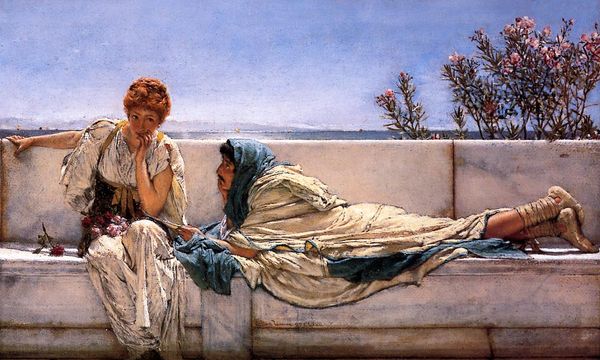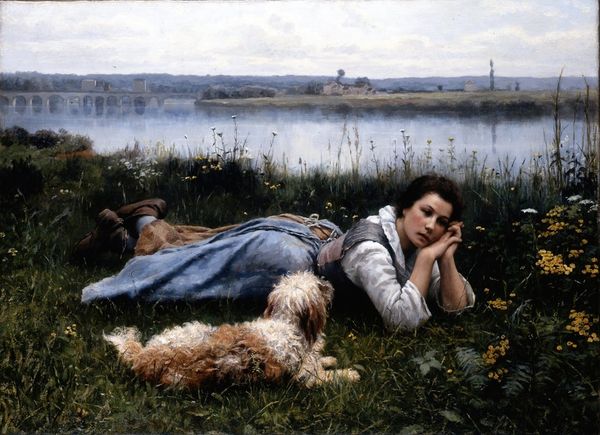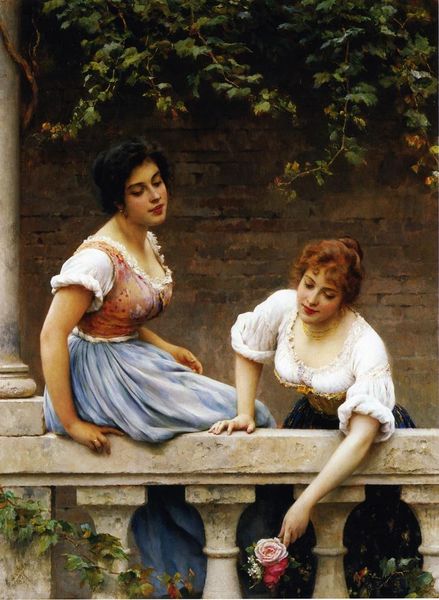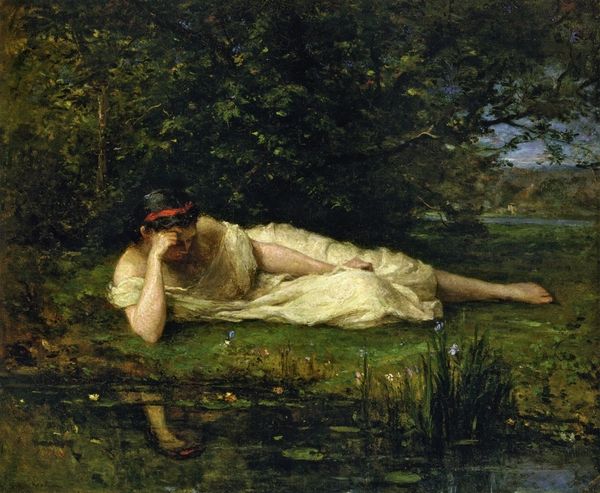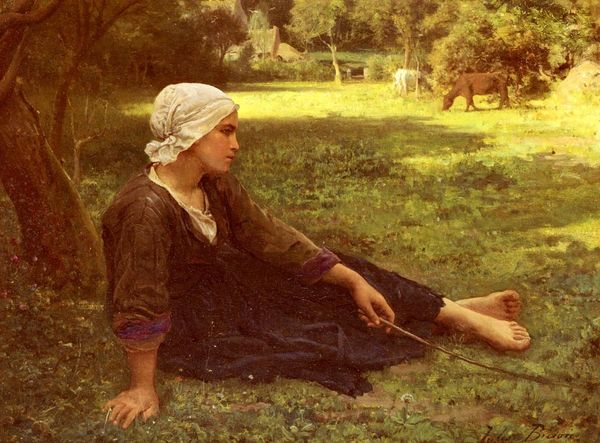
Copyright: Public domain
Editor: Here we have William Bouguereau's "Rest in Harvest," painted in 1865. It's an oil painting that depicts a young woman relaxing in a field. There's something so peaceful and inviting about the scene, and her expression seems both serene and a little melancholy. What do you see in this piece? Curator: I see echoes of idealized rural life, a recurring theme throughout art history that speaks to humanity's enduring connection with nature. Notice how the artist places her at the edge of the field. She embodies both the comfort of home and the promise of abundance, emphasized by the warm colors of the wheat and grass. It reminds me of older depictions of Ceres, the goddess of agriculture. Do you see any symbols that evoke that feeling for you? Editor: Well, the wheat certainly does! It speaks to a bountiful harvest, almost literally "rest[ing] in harvest", but it seems like a double-entendre with the woman resting on the ground. Maybe the flowers too? I’m less familiar with symbolism in painting... Curator: The flowers, yes! Think of them as fleeting moments of beauty amidst the abundance of the harvest, echoing her own youth. They are, specifically, poppies. These can be seen as symbols of sleep, rest, or even death, reflecting a cycle of renewal, as well as commenting on how the working class lived and labored at this time. What does the inclusion of that dichotomy, that commentary, evoke in you as you consider this scene? Editor: That’s interesting! So, even in this tranquil setting, there are undercurrents of deeper meanings relating to the labor conditions of agricultural work and the transience of beauty and life. This piece carries far more depth than I originally thought. Curator: Indeed. Bouguereau masterfully used symbols to tap into our collective memory and link the temporal with the timeless.
Comments
No comments
Be the first to comment and join the conversation on the ultimate creative platform.

